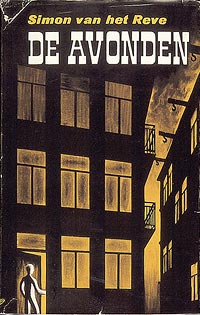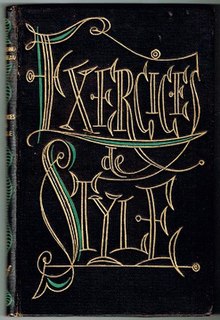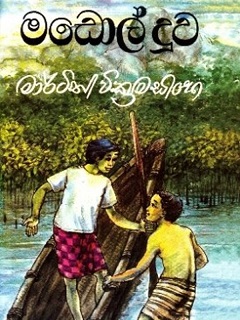 W
WLettre à mon juge was written by Belgian author Georges Simenon in 1946 during his stay at Bradenton Beach, Florida and published in Paris the following year by Presses de la Cité. It is a dark psychological account of a man overcome by buried passions, who becomes a murderer.
 W
WAsamardhuni Jivayatra is a 1947 Telugu language novel by Tripuraneni Gopichand. It is a psychological novel, using stream of consciousness technique. One of Gopichand's best-known works, it is regarded as the first psychological novel in Telugu literature.
 W
WChiquinho is a Capeverdean novel written by Baltasar Lopes da Silva in 1936 and published in 1947. The story is named after the nickname of the island of São Nicolau in which the characters originated. The probability of the literary work is the most common in Cape Verde, it marked the beginning of the typical literature in Cape Verde along with local themes in Creole culture. Along with Claridade, Baltazar Lopes participated with Manuel Lopes and Jorge Barbosa with founded members of the review and the name was the movement in the main activists of the same.
 W
WCocorí is Costa Rican author Joaquín Gutiérrez's most popular children's book, perhaps only topped by La Hoja de Aire. Published in 1947, the short novel ranks among the most outstanding children's stories in Costa Rica, and is mandatory reading in all primary schools. It has been translated into ten languages, and adapted for the theater several times in Germany, Czech Republic, Mexico and seven other countries.
 W
WConjugal Love was written in the original Italian, by Alberto Moravia in 1947. It was first translated into English in 1951, and has since a new translation by Marina Harss as published by Other Press in 2007.
 W
WThe Evenings: A Winter's Tale is a debut novel by Dutch author Gerard Reve released in November 1947 under the pseudonym "Simon van het Reve". The full title of the book was De avonden: Een winterverhaal.
 W
WExercises in Style, written by Raymond Queneau, is a collection of 99 retellings of the same story, each in a different style. In each, the narrator gets on the "S" bus, witnesses an altercation between a man with a long neck and funny hat and another passenger, and then sees the same person two hours later at the Gare St-Lazare getting advice on adding a button to his overcoat. The literary variations recall the famous 33rd chapter of the 1512 rhetorical guide by Desiderius Erasmus, Copia: Foundations of the Abundant Style.
 W
WFortress Besieged is a Chinese satirical novel written by Qian Zhongshu, first published in 1947, and widely considered one of the masterpieces of twentieth century Chinese literature. The novel is a humorous tale about middle-class Chinese society in the late 1930s. It was made into a popular television series in the early 1990s.
 W
WLand of Sin or Country of Sin, published in 1947, is the first novel by author José Saramago, who in 1998 became the first author writing in Portuguese to win the Nobel Prize for Literature. It tells the story of a widow, Maria Leonor, who starts an affair with her brother-in-law and confides in her family doctor.
 W
WMadol Doova (Sinhala: මඩොල් දූව is a children's novel and coming-of-age story written by Sri Lankan writer Martin Wickramasinghe and first published in 1947. The book recounts the misadventures of Upali Giniwella and his friends on the Southern coast of Sri Lanka during the 1890s. It later describes the efforts of Upali and his friend Jinna to lead their lives in a small deserted island. The novel has been translated into several languages, and was made into a film of the same name in 1976.
 W
WThe Man Who Had His Hair Cut Short is a 1947 novel by the Flemish writer Johan Daisne. It tells the story of a teacher at a girls' school who falls in love with one of his students; he moves from the town and changes profession in order to avoid her, and slowly begins to grow insane. The novel was published in English in 1965, translated by S. J. Sackett. It was adapted into a 1966 film with the same title directed by André Delvaux.
 W
WManvi Ni Bhavai is a 1947 Gujarati novel written by Pannalal Patel. It is set in the period of the Indian famine of 1899–1900, locally known as the Chhappaniyo Dukal in Gujarat. The novel centres around the love story of Kalu and Raju as well as the difficult and often tragic life of farmers during the famine. It was translated into English by V. Y Kantak in 1995. It was adapted into a Gujarati film scene in 1993.
 W
WMeeting at the Milestone by Sigurd Hoel was first published in 1947 by Gyldendal Norsk Forlag. It is considered one of the most significant books of Norwegian literature of the Occupation. It was immediately translated into several other languages.
 W
WMidaq Alley is the English Translation of 'Zuqaq El Midaq' by Egypt's Naguib Mahfouz, released in English in 1966. The story is about Midaq Alley in Khan el-Khalili, a teeming back street in Cairo which is a microcosm of the world.
 W
WMy Little War is the fourth novel by Louis Paul Boon, first published in 1947. A translation was produced by Paul Vincent in 2010.
 W
WThe Path to the Nest of Spiders is a 1947 novel by the Italian writer Italo Calvino. The narrative is a coming-of-age story, set against the backdrop of World War II. It was Calvino's first novel.
 W
WTommaso Landolfi was an Italian author, translator and literary critic. His numerous grotesque tales and novels, sometimes on the border of speculative fiction, science fiction and realism, place him in a unique and unorthodox position among Italian writers. He won a number of awards, including the prestigious Strega Prize.
 W
WThe Setting Sun is a Japanese novel by Osamu Dazai. It was published in 1947 and is set in Japan after World War II. Principal characters are Kazuko, her brother Naoji, and their elderly mother. The story shows a family in decline and crisis, like many other families during this period of transition between traditional Japan and a more advanced, industrial society. Many families needed to leave their old lives behind and start anew. Throughout the story, mostly through the character Naoji, the author brings up a number of social and philosophical problems of that time period.
 W
WWhen Smuts Goes is a dystopian novel by Dr. Arthur Keppel-Jones. The novel is set during a future history of South Africa, following the ascension of Afrikaner nationalists and their increasingly destructive quest for total apartheid. It foreshadowed the fall of Jan Christiaan Smuts and his United Party administration, a rupture in ties with the British Commonwealth, and the declaration of a Second South African Republic. Presiding over the regime which follows is Obadja Bult, a dominion theologian influenced by the ideals of the former Ossewabrandwag. His blunt authoritarian streak gives spark to racial conflict—culminating in foreign intervention and troubled majority rule.
 W
WThe title of Stevan Javellana's only novel in English Without Seeing the Dawn was derived from one of José Rizal's character in the Spanish-language novel Noli Me Tangere or Touch Me Not. Javellana's 368-paged book has two parts, namely Day and Night. The first part, Day, narrates the story of a pre-war barrio and its people in the Panay Island particularly in Iloilo. The second part, Night, begins with the start of World War II in both the U.S. and the Philippines, and retells the story of the resistance movement against the occupying Japanese military forces of the barrio people first seen in Day. It narrates the people's "grim experiences" during the war.
 W
WThe Woman from Rome is a 1947 novel by Alberto Moravia about the intersecting lives of many characters, chief among them a prostitute and an idealistic intellectual who, after an interrogation by the Fascist officers, during which he betrays his colleagues, becomes completely disillusioned about everything.
 W
WWrzesień żagwiący is a 1947 book of literary reportage written by the Polish historian and political journalist Melchior Wańkowicz. The book is a collection of analytical thinking stories written by Wańkowicz in the early 1940s, while the author was in exile. Following the invasion of Poland, he left the country in late September 1939 for Romania, later moving to Cyprus, BritishPalestine, Italy, and finally, to London. Wrzesień żagwiący gives a vivid account of the Polish September Campaign; its title refers to the fact that Nazi Germany, together with the Soviet Union invaded the Second Polish Republic jointly in September 1939. The book was first published in 1947, in London, by Gryf Publishing House. It was reprinted in 1990 by Polonia Publishing House, while several stories from the book were printed separately, with the most popular one, Westerplatte, having been printed in 1959, 1960, 1963, 1967, 1968, 1971, 1989, and 1990. In August 2009, Warsaw publishing house Prószyński i Spółka reprinted the book in the third volume of collected works by Wańkowicz. In this volume, Wrzesień żagwiący is published together with other war-related stories, such as Strzępy epopei, Szpital w Cichiniczach, and Po klęsce.